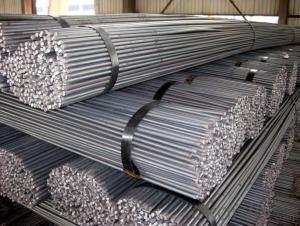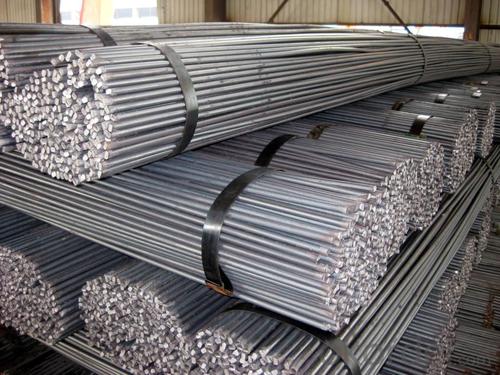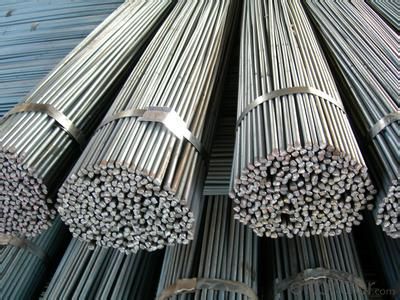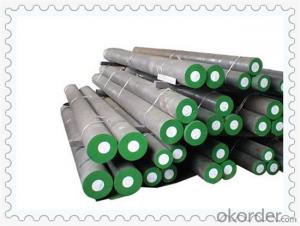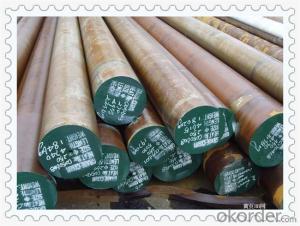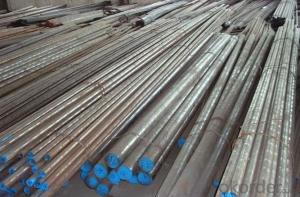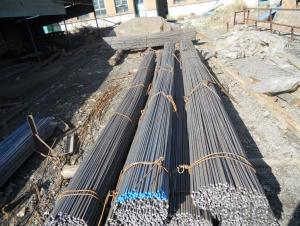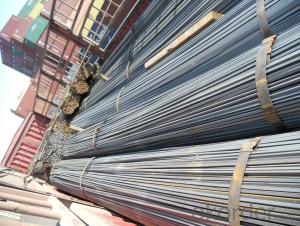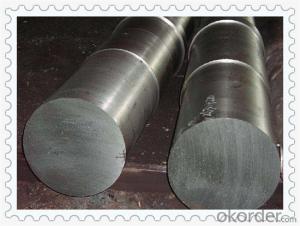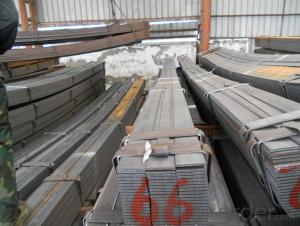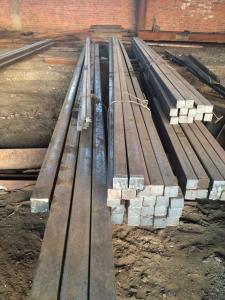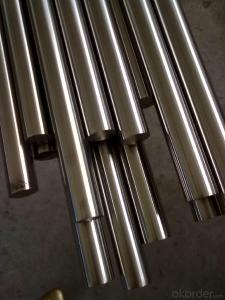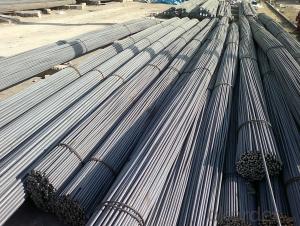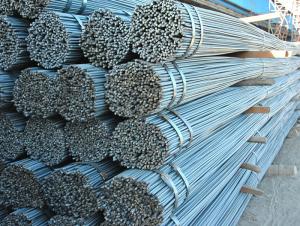Q235, A36 SS400 Hot Rolled Steel Round Bar
- Loading Port:
- China main port
- Payment Terms:
- TT or LC
- Min Order Qty:
- 25 m.t.
- Supply Capability:
- 200000 m.t./month
OKorder Service Pledge
OKorder Financial Service
You Might Also Like
Product Description:
OKorder is offeringQ235, A36 Hot Rolled Steel Round Bar great prices with worldwide shipping. Our supplier is a world-class manufacturer of steel, with our products utilized the world over. OKorder annually supplies products to European, North American and Asian markets. We provide quotations within 24 hours of receiving an inquiry and guarantee competitive prices.
Product Applications:
High Qualty Q235, A36 High Quality Hot Rolled Steel Round Bar are ideal for structural applications and are widely used in the construction of buildings and bridges, and the manufacturing, petrochemical, and transportation industries.
Product Advantages:
OKorder's Q235, A36 Hot Rolled Steel Round Bar are durable, strong, and resist corrosion.
Main Product Features:
· Premium quality
· Prompt delivery & seaworthy packing (30 days after receiving deposit)
· Corrosion resistance
· Can be recycled and reused
· Mill test certification
· Professional Service
· Competitive pricing
Product Description:
Specifications of Q235, A36 Hot Rolled Steel Round Bar
1. Sizes: Diameter: 6mm-150mm; Length: 6m, 9m, 12m
2. Grade: Q195, Q235
3. Invoicing on theoretical weight or actual weight as customer’s request
4. Shape: Round bar, solid bar of steel with circular section
5. Technique: Hot rolled
6. Details of specification
Diameter | Mass | Diameter | Mass | Diameter | Mass |
(mm) | (kg/m) | (mm) | (kg/m) | (mm) | (kg/m) |
6 | 0.22 | 22 | 2.98 | 53 | 17.30 |
7 | 0.30 | 24 | 3.55 | 56 | 19.30 |
8 | 0.40 | 25 | 3.85 | 60 | 22.20 |
9 | 0.50 | 26 | 4.17 | 63 | 24.50 |
10 | 0.62 | 28 | 4.83 | 65 | 26.00 |
11 | 0.75 | 30 | 5.55 | 70 | 30.20 |
12 | 0.89 | 32 | 6.31 | 75 | 34.70 |
13 | 1.04 | 34 | 7.13 | 80 | 39.50 |
14 | 1.21 | 36 | 7.99 | 85 | 44.50 |
15 | 1.39 | 38 | 8.90 | 90 | 49.90 |
16 | 1.58 | 40 | 9.86 | 95 | 55.60 |
17 | 1.78 | 42 | 10.90 | 100 | 61.70 |
18 | 2.00 | 45 | 12.50 | 120 | 88.85 |
19 | 2.23 | 48 | 14.20 | 140 | 120.93 |
20 | 2.47 | 50 | 15.40 | 150 | 138.82 |
Usage and Applications of Q235, A36 High Quality Hot Rolled Steel Round Bar
1. Steel round bar is used in a large number of architectural and engineering structures. Or it can be used in construction of plants for the production of steel house frames, high-voltage transmission towers, bridges, vehicles, boilers, containers, ships, etc.
2. And we can use this kind of product on the performance of the mechanical parts if the demand is not very high.
3. Some especial material steel round bar can be used for main shaft of steamer, hummer shank, with big section and supper force.
Packaging & Delivery of Q235, A36 High Quality Hot Rolled Steel Round Bar
Packaging Detail: Standard seaworthy packing or as customer required; all goods are packed in bundle with steel strips and shipped by break bulk vessel or container
Delivery Detail: 45 days
Trade terms: FOB, CFR, CIF or as customer required
MOQ: 25 tons per specification; we can negotiate the quantity if the specification is normal or we have stock of one specification.
Weight: Theprice invoicing on theoretical weight basis or actual weight basis depends on customer’s request.
Shipment: The shipment of bulk break or container is depends on customer’s request.
Documents given: Full set (3/3) of original clean on board bill of lading; Original signed commercial invoice, in 3 originals and 3 copies; Original packing list in 3 originals and 3 copies; Policy of insurance; Certificate of origin and what the target market needs.
Production Flow of Q235, A36 High Quality Hot Rolled Steel Round Bar
EAF+LF+VD+ Forged+ Heat Treatment
Material prepare (billet) — heat up — rough rolling — precision rolling — cooling — packing — storage and transportation
Quality Assurance of Q235, A36 High Quality Hot Rolled Steel Round Bar
1. We will strictly inspect our production that we sold according to the customer’s request.
2. Our steel reaches international quality standards.
3. Quality should be in conformity with the specification of the manufacturer. Quantity and packing conditions should be in conformity with the term in the contract.
4. Should the packing found damaged, the buyer has the right to claim to the seller.
FAQ:
Q1: Why buy Materials & Equipment from OKorder.com?
A1: All products offered byOKorder.com are carefully selected from China's most reliable manufacturing enterprises. Through its ISO certifications, OKorder.com adheres to the highest standards and a commitment to supply chain safety and customer satisfaction.
Q2: How do we guarantee the quality of our products?
A2: We have established an advanced quality management system which conducts strict quality tests at every step, from raw materials to the final product. At the same time, we provide extensive follow-up service assurances as required.
Q3: How soon can we receive the product after purchase?
A3: Within three days of placing an order, we will begin production. The specific shiping date is dependent upon international and government factors, but is typically 7 to 10 workdays.
Images:
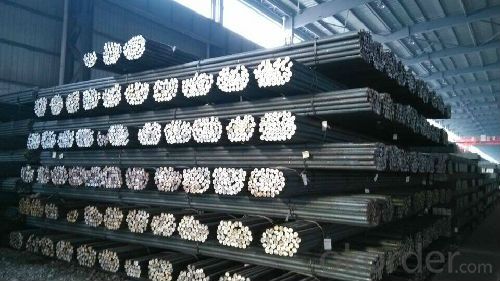
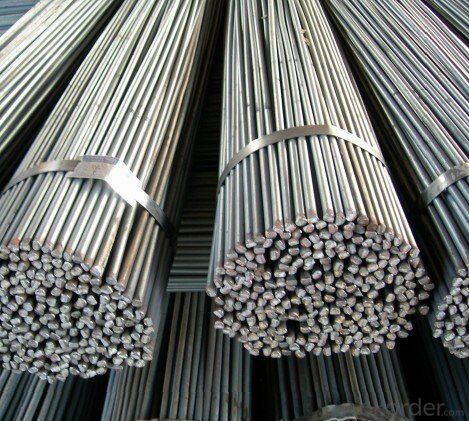
- Q: What are the considerations for selecting the right steel grade for a round bar?
- When selecting the right steel grade for a round bar, there are several considerations to take into account. Firstly, the intended application of the round bar must be evaluated, as different steel grades offer varying levels of strength, hardness, and corrosion resistance. Additionally, factors such as the desired machinability, weldability, and heat treatability should be considered. Furthermore, the environmental conditions in which the round bar will be used, such as temperature and exposure to chemicals, play a crucial role in determining the appropriate steel grade. Lastly, budget constraints and availability of the steel grade should also be taken into consideration. Overall, a thorough analysis of the application requirements and an understanding of the properties of different steel grades are key considerations in selecting the right steel grade for a round bar.
- Q: What is the difference between a peeled and a centerless ground steel round bar?
- A peeled steel round bar involves the removal of the outer surface to achieve a smooth and precise finish. This is typically done using a peeling machine. The purpose of this process is to eliminate any imperfections or scale on the bar's surface, resulting in a polished appearance. Additionally, the peeled round bar goes through a sizing process to ensure accurate dimensions. This makes it suitable for various applications where a smooth surface and precise dimensions are important. In contrast, a centerless ground steel round bar is achieved through the use of a centerless grinding machine. This process entails feeding the bar through grinding wheels that rotate at different speeds. Material is removed from the outer diameter of the bar to attain the desired size and surface finish. Centerless grinding offers tight tolerances and precise sizing, making it suitable for applications that demand high precision and accuracy. In summary, the primary distinction between a peeled and a centerless ground steel round bar lies in the method employed to achieve the desired surface finish and dimensional accuracy. While both processes result in a smooth and precise bar, peeling eliminates material from the outer surface, whereas centerless grinding removes material from the outer diameter. The choice between the two depends on the specific requirements of the application, as well as the desired surface finish and dimensional accuracy.
- Q: Can steel round bars be used for making brake components?
- Yes, steel round bars can be used for making brake components. Steel is a commonly used material in brake systems due to its high strength, durability, and heat resistance properties. Steel round bars can be machined and shaped into various brake components such as brake discs, brake rotors, brake calipers, and brake pistons. The use of steel round bars ensures the brake components can withstand the high pressures and temperatures generated during braking, providing reliable and efficient stopping power.
- Q: What are the different types of steel round bar surface treatments used in the automotive industry?
- In the automotive industry, there are several types of steel round bar surface treatments used to enhance the performance, durability, and aesthetics of the components. Some of the common surface treatments include: 1. Phosphating: Phosphating is a widely used surface treatment that involves applying a phosphate coating on the steel round bar. This treatment enhances corrosion resistance and provides a good base for further coatings or paints. 2. Galvanizing: Galvanizing involves applying a layer of zinc to the steel round bar's surface. This treatment provides excellent corrosion resistance and enhances the lifespan of the component. 3. Electroplating: Electroplating is a process where a thin layer of metal, such as chrome or nickel, is deposited onto the steel round bar's surface using an electric current. This treatment improves the appearance, provides corrosion resistance, and enhances wear resistance. 4. Powder coating: Powder coating is a popular surface treatment method where a dry powder is applied to the steel round bar's surface and then heated to form a protective coating. This treatment provides excellent durability, corrosion resistance, and can be customized with various colors and finishes. 5. Anodizing: Anodizing is typically used for aluminum components in the automotive industry. However, it can also be applied to steel round bars in certain cases. This treatment involves creating an oxide layer on the surface, providing improved corrosion resistance and enhancing the appearance. 6. Black oxide coating: Black oxide coating is a chemical treatment that creates a blackened surface on the steel round bar. This treatment provides corrosion resistance, improved aesthetics, and can also act as a lubricant in certain applications. It is important to note that the choice of surface treatment depends on the specific requirements of the automotive component, including environmental conditions, desired appearance, and functional properties. Manufacturers carefully select the appropriate treatment to ensure optimal performance and longevity of the steel round bar in the automotive industry.
- Q: Are steel round bars susceptible to corrosion?
- Corrosion is a common issue for steel round bars, especially when they come into contact with moisture, oxygen, and certain chemicals. The degradation of the material occurs when the metal reacts with its surroundings. Steel, primarily composed of iron, can undergo different types of corrosion, including general corrosion, pitting corrosion, and stress corrosion cracking. When steel round bars are exposed to moisture and oxygen, they can experience general corrosion. This gradual deterioration manifests as the formation of an oxide layer on the surface, resulting in material loss and reduced strength over time. Pitting corrosion is another type that steel round bars may encounter. It involves localized damage on the metal's surface, leading to the creation of small pits. These pits can deepen and expand, compromising the structure and integrity of the bars. Stress corrosion cracking is a specific form of corrosion that affects steel round bars under tensile stress, in the presence of particular corrosive agents. This phenomenon can cause sudden material failure, even when stress levels are below the bars' yield strength. To combat corrosion, protective coatings and corrosion inhibitors are commonly applied to steel round bars. Methods like galvanization, where a layer of zinc is added, or the use of epoxy or paint coatings are often employed. Regular maintenance and proper storage practices are also important in preventing excessive exposure to corrosive elements. It is worth noting that the susceptibility to corrosion can vary depending on the grade and composition of the steel used for the round bars. Certain types of stainless steel, for instance, exhibit higher resistance to corrosion due to the presence of chromium and other alloying elements. In conclusion, while steel round bars can be vulnerable to corrosion, appropriate preventive measures can be implemented to minimize the risk and prolong their lifespan.
- Q: What are the advantages of using nickel-alloy steel round bars?
- There are several advantages of using nickel-alloy steel round bars. Firstly, nickel-alloy steel has excellent corrosion resistance, making it suitable for use in harsh environments or applications where the material is exposed to corrosive elements. Secondly, nickel-alloy steel possesses high temperature strength and resistance to thermal expansion, making it ideal for use in high-temperature applications such as aerospace or power generation. Additionally, nickel-alloy steel offers good mechanical properties, including high tensile strength and toughness, which make it suitable for demanding applications that require strength and durability. Overall, the use of nickel-alloy steel round bars provides a combination of corrosion resistance, high-temperature strength, and mechanical properties, making it a versatile and reliable material choice in various industries.
- Q: What are the different types of steel round bar surface treatments used in the automotive industry?
- In order to enhance the performance, durability, and aesthetics of components in the automotive industry, various surface treatments are utilized for steel round bars. Some commonly employed treatments include: 1. Phosphating: Widely used, this treatment involves the application of a phosphate coating onto the steel round bar. Its purpose is to improve corrosion resistance and establish a suitable foundation for further coatings or paints. 2. Galvanizing: Another method is to apply a layer of zinc onto the surface of the steel round bar. This treatment offers excellent corrosion resistance and extends the lifespan of the component. 3. Electroplating: By utilizing an electric current, a thin layer of metal, such as chrome or nickel, is deposited onto the steel round bar's surface. This treatment enhances appearance, provides corrosion resistance, and improves wear resistance. 4. Powder coating: A popular technique involves the application of a dry powder onto the surface of the steel round bar, followed by heating to form a protective coating. This treatment ensures exceptional durability, corrosion resistance, and can be customized with different colors and finishes. 5. Anodizing: Typically used for aluminum components, anodizing can also be applied to steel round bars in specific cases. This treatment involves the creation of an oxide layer on the surface, resulting in improved corrosion resistance and enhanced appearance. 6. Black oxide coating: A chemical treatment that produces a blackened surface on the steel round bar. This treatment offers corrosion resistance, improved aesthetics, and can serve as a lubricant in certain applications. It is crucial to consider the specific requirements of the automotive component, including environmental conditions, desired appearance, and functional properties when selecting the appropriate surface treatment. Manufacturers meticulously choose the most suitable treatment to ensure optimal performance and longevity of steel round bars in the automotive industry.
- Q: What are the advantages of using non-alloy steel round bars?
- There are several advantages of using non-alloy steel round bars. Firstly, non-alloy steel round bars are known for their high strength and durability. They have a higher tensile strength compared to alloy steel, making them suitable for various applications where strength is a crucial requirement. This makes them ideal for use in industries such as construction, automotive, and manufacturing. Additionally, non-alloy steel round bars have excellent weldability and machinability. They can be easily welded and formed into various shapes, allowing for flexibility in design and fabrication. This makes them convenient to work with and saves time and effort during the manufacturing process. Non-alloy steel round bars also have good corrosion resistance properties. They are less prone to rust and degradation, making them suitable for use in environments where exposure to moisture or corrosive substances is a concern. This corrosion resistance ensures the longevity and reliability of the steel bars, reducing maintenance and replacement costs in the long run. Furthermore, non-alloy steel round bars are cost-effective compared to alloy steel. They are more affordable and readily available, making them a cost-efficient choice for a wide range of applications. This affordability makes non-alloy steel round bars a popular choice for small-scale projects or businesses with budget constraints. Overall, the advantages of using non-alloy steel round bars include high strength, excellent weldability and machinability, good corrosion resistance, and cost-effectiveness. These qualities make them a versatile and reliable option for various industries and applications.
- Q: Can steel round bars be used in the manufacturing of hydraulic components?
- Indeed, the utilization of steel round bars is feasible for the production of hydraulic components. Owing to its robustness, endurance, and corrosion resistance, steel is widely employed in the fabrication of hydraulic components. By molding and machining steel round bars, an assortment of hydraulic components, including pistons, cylinders, valves, and fittings, can be manufactured. The adoption of steel round bars guarantees the capability of withstanding elevated pressures and maintaining optimal performance across diverse hydraulic systems.
- Q: How do you check the quality of a steel round bar?
- To check the quality of a steel round bar, several factors need to be considered. Firstly, it is important to assess the bar's dimensions. This involves measuring its diameter, length, and straightness. Any deviation from the specified dimensions could indicate a lower quality bar. Next, the surface condition of the steel round bar should be inspected. It should be free from any visible defects, such as cracks, pits, or surface irregularities. Additionally, the bar's surface should be smooth and devoid of any significant roughness or burrs. Furthermore, the chemical composition of the steel round bar must be examined. This can be determined through spectroscopic analysis or other testing methods. The composition should meet the required standards and specifications, as any deviations can affect the bar's strength and durability. Another crucial aspect to consider is the mechanical properties of the steel round bar. This involves testing its tensile strength, yield strength, and elongation. These tests can be conducted using specialized machines to ensure that the bar meets the necessary strength requirements. Additionally, the steel round bar can be subjected to non-destructive testing methods, such as ultrasonic testing or magnetic particle inspection. These techniques help identify any internal or surface defects that may impact the bar's quality. Furthermore, it is essential to verify the bar's compliance with industry standards and certifications. This includes checking if the steel round bar meets the specifications set by organizations such as ASTM International or ISO. Lastly, it is advisable to consult with reputable suppliers or manufacturers who have a proven track record in producing high-quality steel round bars. They can provide documentation, certifications, and test reports to validate the quality of their products. In summary, evaluating the dimensions, surface condition, chemical composition, mechanical properties, compliance with standards, and supplier's reputation are key steps to check the quality of a steel round bar. By thoroughly examining these factors, one can ensure the reliability and performance of the steel round bar for their intended applications.
Send your message to us
Q235, A36 SS400 Hot Rolled Steel Round Bar
- Loading Port:
- China main port
- Payment Terms:
- TT or LC
- Min Order Qty:
- 25 m.t.
- Supply Capability:
- 200000 m.t./month
OKorder Service Pledge
OKorder Financial Service
Similar products
Hot products
Hot Searches
Related keywords
